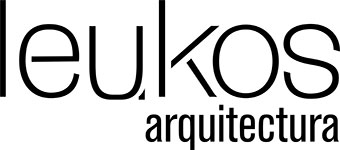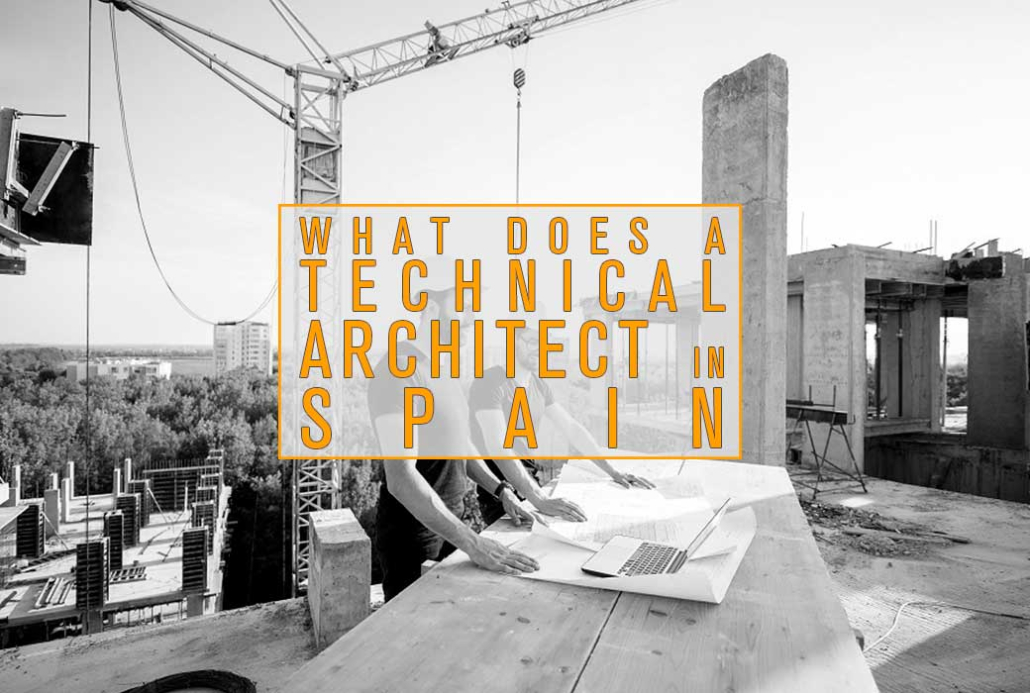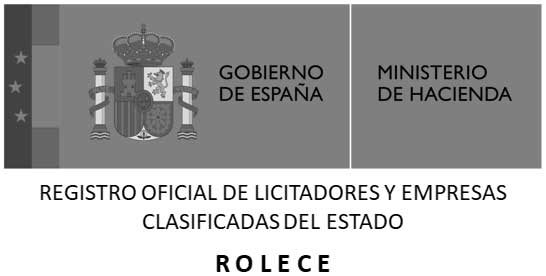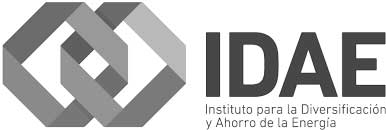What Does a Technical Architect Do in Spain?
Entry published by: Francisco Joaquín Jiménez González. Registered architect and PassivHaus designer
If you are unfamiliar with the construction and design industries in Spain, you might be surprised to learn that there are two key roles in building projects: the arquitecto (architect) and the arquitecto técnico (technical architect).
We at Leukos have discovered that both professionals usually generates chaos and misunderstanding for foreigners, so we have write down this article intending to clarify it.
While both professions work closely together, the responsibilities of a technical architect are distinct and crucial to the success of any construction project.
For foreign professionals or clients planning to work or build in Spain, understanding the role of a technical architect is essential for ensuring that the design, construction, and technical aspects of a project run smoothly.
This article explores the role of a technical architect in Spain, including their educational background, key responsibilities, legal obligations, and their importance in the Spanish construction industry.
Introduction to the Technical Architect Role
A technical architect in Spain, known as an arquitecto técnico or aparejador, plays an integral role in the construction process. Unlike an architect who focuses on the design and conceptual aspects of a project, the technical architect is primarily responsible for overseeing the good construction of any work. Their main task is to ensure that the design is accurately translated into a practical and compliant construction plan.
In many countries, the roles of an architect and technical architect might overlap or even merge into a single profession. However, Spain has a clearly defined division of labor between these two roles. Technical architects work directly on construction sites, ensuring that everything from materials to safety standards adheres to strict building regulations.
Main Responsibilities:
- Overseeing the construction process.
- Ensuring compliance with building codes and safety regulations.
- Managing costs and materials.
- Supervising workers and contractors.
Education and Training Requirements
To become a technical architect in Spain, one must complete a Grado en Arquitectura Técnica, which is a four-year undergraduate degree program focused on construction technologies, structural engineering, materials science, and project management. This program is offered at universities throughout Spain and is specifically designed to prepare students for the technical and practical demands of the profession.
Differences Between an Architect and a Technical Architect
Although both architects and technical architects work in the construction industry, their roles are distinct. Understanding these differences is crucial for foreign clients or professionals looking to collaborate on projects in Spain.
Architect:
- Focuses primarily on the design, structure, aesthetics, and functionality of buildings.
- Works on creating detailed design plans, often using tools like CAD and BIM.
- Oversees the project from a conceptual and general standpoint and ensures that the design meets the client’s needs and vision.
Technical Architect:
- Focuses on the technical and structural aspects of construction.
- Ensures that the architect’s design is built according to technical specifications and legal regulations.
- Oversees construction sites, managing contractors, materials, and safety procedures.
Key Responsibilities of a Technical Architect
A technical architect in Spain has several core responsibilities that help to ensure a building is constructed correctly, safely, and within budget. While architects handle the project and oversees the global aspects of the construction, technical architects oversee the construction and health and safety of the construction site.
Main Duties Include:
- Interpreting Design Plans: Working closely with architects to understand the design intent and ensuring that it can be implemented on-site.
- Material and quality Integrity: Ensuring that the materials used are adequate for the building’s structural integrity and that construction follows technical and safety standards.
- Health and Safety and On-Site Supervision: Acting as the main point of contact on construction sites, overseeing the daily operations, and resolving any technical issues that may arise.
Site Supervision and Construction Management
One of the technical architect’s most critical tasks is supervising the construction site. They act as a liaison between the architect, the client, and the construction crew, ensuring that the project is being executed according to the approved plans.
Key Responsibilities on Site:
- Daily Oversight: Ensuring that the construction follows the specifications outlined in the architectural plans.
- Material Management: Monitoring the delivery and use of building materials, ensuring that quality and quantities meet the project’s needs.
- Problem-Solving: Addressing issues that arise during construction, whether related to materials, quality concerns, or unforeseen complications.
Legal and Administrative Duties
In Spain, technical architects are legally required to ensure that all construction work complies with local, regional, and national building codes. This includes submitting technical documents and ensuring compliance with environmental and safety regulations.
Legal Tasks:
- Document Submission: Preparing and submitting detailed construction reports, technical assessments, and compliance certificates to ensure the building meets all legal requirements.
- Regulatory Compliance: Ensuring that the project adheres to the technical, structural, and safety standards set by Spanish law.
Collaboration with Other Professionals
The technical architect’s role involves close collaboration with a range of professionals, including architects, engineers, contractors, and clients. Effective communication and teamwork are essential to ensure that the construction project runs smoothly.
Professional Collaborations:
- Architects: Working together to ensure the design is executed as intended.
- Engineers: Collaborating with engineers to ensure that all technical aspects of the building are sound.
- Contractors: Supervising builders and construction workers, ensuring that they follow the technical specifications and legal requirements.
Importance of Health and Safety Compliance
One of the most important responsibilities of a technical architect in Spain is to ensure that the construction site complies with all health and safety regulations. This includes creating a studio de seguridad y salud (health and safety study) and monitoring the site to prevent accidents.
Health and Safety Measures:
- Risk Assessment: Identifying potential hazards on the construction site and implementing measures to mitigate risks.
- Safety Inspections: Conducting regular inspections to ensure that workers are following safety protocols.
- Legal Accountability: In Spain, technical architects are legally responsible for ensuring that all safety regulations are met during construction.
Cost Control and Budget Management
Technical architects are often involved in the financial management of construction projects. They help control costs by managing the procurement of materials and ensuring that the project stays within the agreed-upon budget.
Budgetary Duties:
- Cost Estimation: Providing accurate estimates for materials, labor, and other construction-related expenses.
- Procurement: Sourcing and managing materials to ensure that they meet both quality and budgetary requirements.
- Financial Reporting: Regularly updating the client on the financial status of the project, highlighting any potential overruns.
Technical Architect’s Role in Renovations and Restorations
In Spain, the technical architect also plays a significant role in the renovation and restoration of older buildings, especially given the country’s rich architectural heritage. This can involve helping the architects drafting projects for anything from structural repairs to upgrading the building to meet modern safety and environmental standards.
Renovation Tasks:
- Assessing Structural Integrity: Inspecting old buildings to identify areas that need repair or reinforcement.
- Technical Solutions: Developing practical solutions that preserve the historical aspects of the building while ensuring it complies with modern regulations.
- Collaboration with Preservation Authorities: Ensuring that any restoration work adheres to local preservation laws, especially in protected historical areas.
Skills and Competencies Required for a Technical Architect
Technical architects must possess a broad range of skills to handle the complexities of their role. These include not only technical expertise but also strong organizational and communication skills to manage projects effectively.
Key Competencies:
- Technical Knowledge: A deep understanding of building materials, structural engineering, and construction technologies.
- Project Management: The ability to oversee large, complex construction projects, ensuring they are completed on time and within budget.
- Problem-Solving: The capacity to quickly address and resolve issues that arise during construction.
- Communication: Strong interpersonal skills to effectively collaborate with architects, contractors, and clients.
Challenges and Opportunities in Spain
The role of a technical architect in Spain can be both challenging and rewarding. One of the main challenges is navigating Spain’s strict building codes and regulatory environment.
However, with the country’s focus on sustainable construction and urban regeneration, there are many opportunities for technical architects to contribute to innovative and environmentally friendly projects.
Key Challenges:
- Regulatory Complexity: Navigating Spain’s extensive building regulations and legal requirements.
- Economic Fluctuations: The construction industry in Spain can be impacted by broader economic cycles, affecting the demand for technical architects.
Opportunities:
- Sustainability: With an increasing emphasis on green building practices, technical architects have opportunities to lead sustainable construction projects.
- Urban Regeneration: Many Spanish cities are undergoing significant urban renewal, creating opportunities for technical architects to work on innovative developments.
Conclusion
The technical architect, or arquitecto técnico, plays an essential role in Spain’s construction industry, ensuring that buildings are constructed safely, efficiently, and in compliance with legal regulations.
The responsibilities range from site supervision and cost management to ensuring health and safety standards.
For foreign professionals or clients working on projects in Spain, understanding the role of the technical architect is crucial for navigating the local construction landscape successfully. With Spain’s growing focus on sustainability and innovation, the demand for skilled technical architects is expected to continue, offering many exciting opportunities in the future.





Leave a Reply
Want to join the discussion?Feel free to contribute!